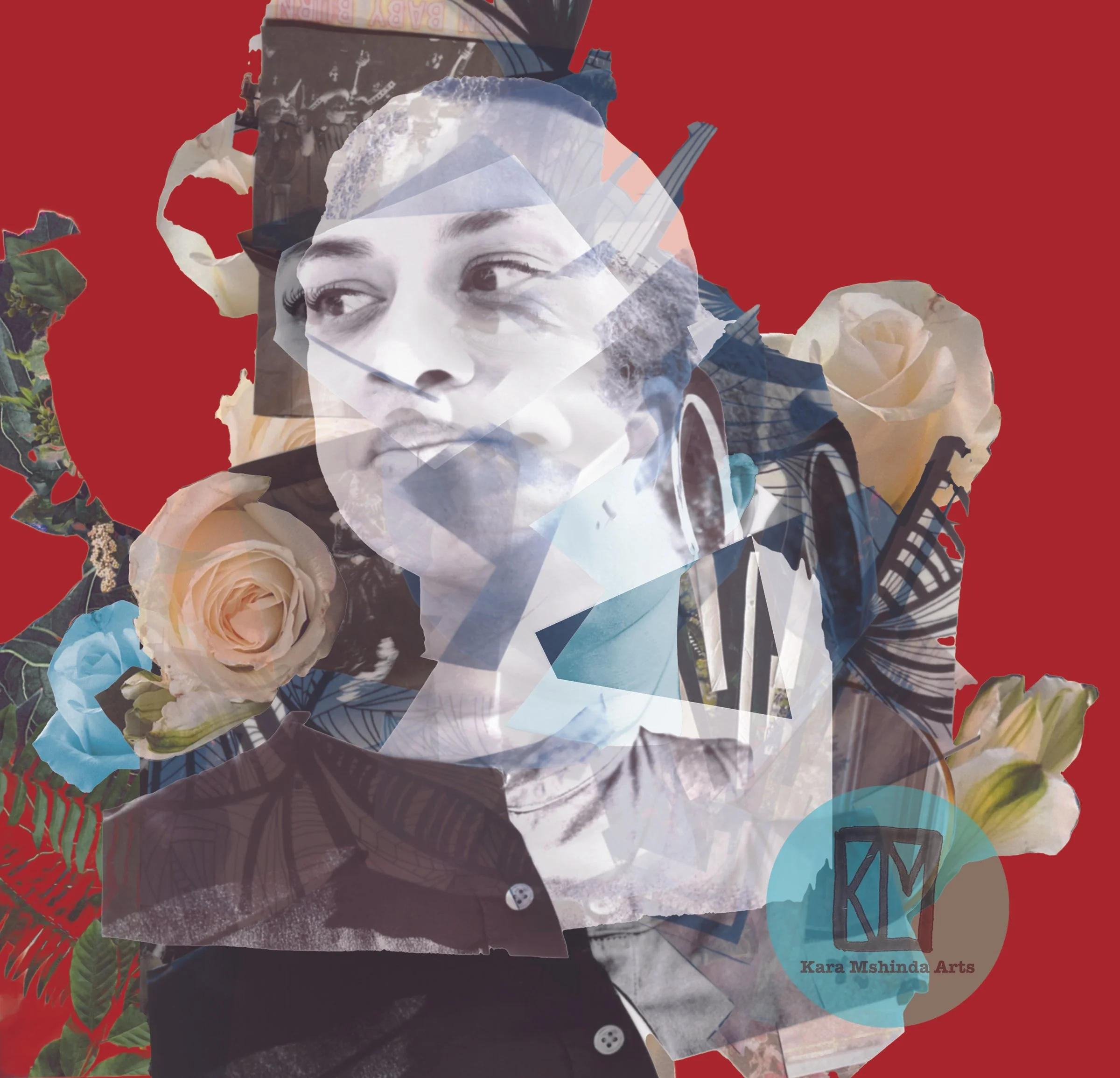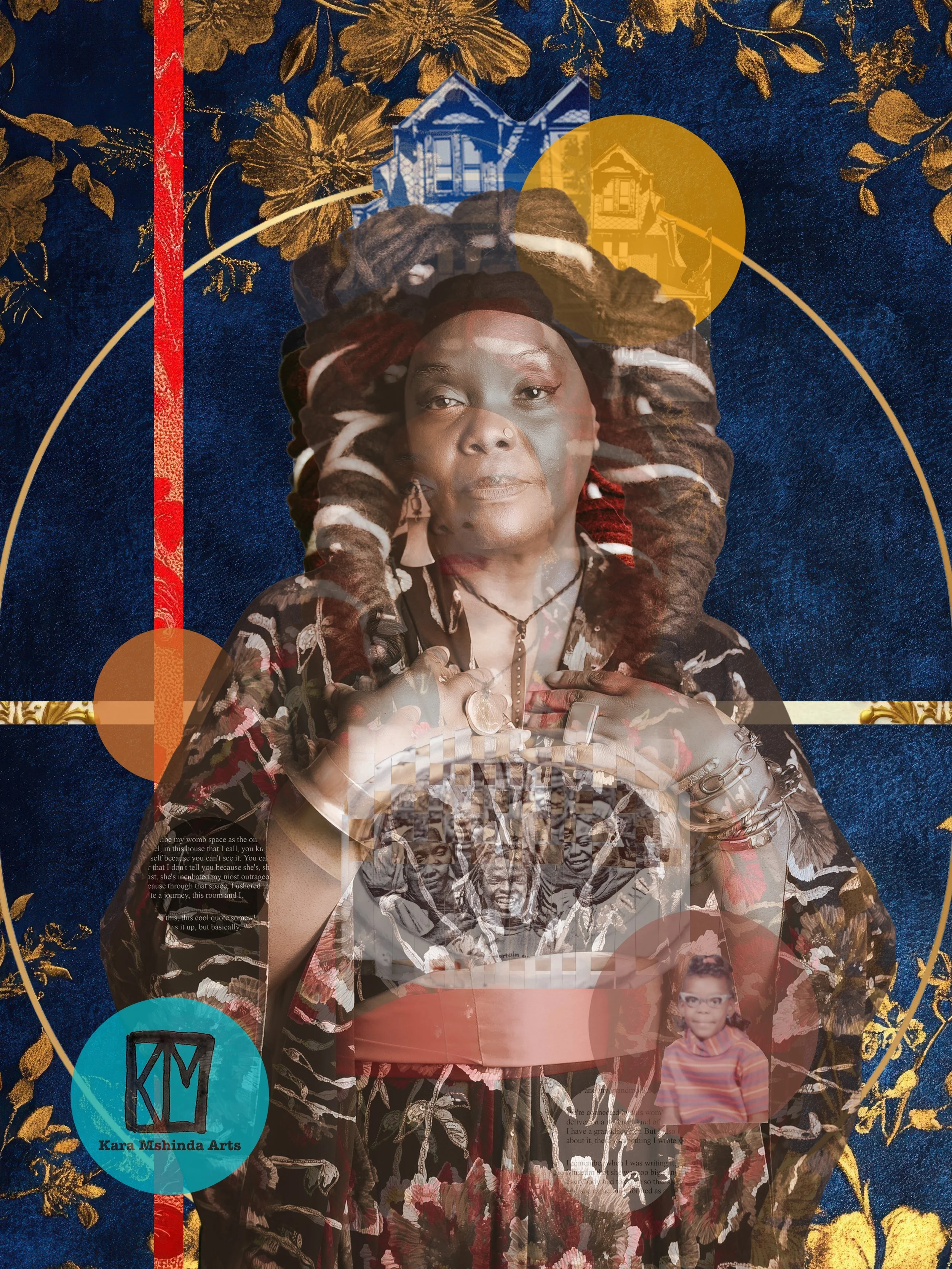About the Artist
Artist Statement
As a visual anthropologist and collage artist, my practice exists at the intersection of documentary and creative expression. I explore the boundaries of traditional photographic representation through methodologies that embrace both analog and digital processes, creating layered visual narratives that speak to the complexity of human experience.
Central to my practice is what I call the "spontaneous layering method"—a process where digital images are transformed into material fragments, then reconstructed through careful placement on a flatbed scanner. This technique of fragmentation and reassembly mirrors the way we construct meaning from experience, how memory operates in non-linear ways, and how identity itself is constantly being negotiated and reimagined. In this process, I allow the center of each image to emerge organically, letting the photograph reveal itself through patient observation of its fragments, forcing a deeper looking and more intimate engagement with each element of the subject's story.
Of Black Wombhood applies these methodologies to explore personal health histories and reproductive experiences. This work represents my commitment to creating a visual language that honors the complex realities of Blackness and of those who have been born into and bear wombs. This focus recognizes that Black womb experiences have been historically misrepresented, medicalized, or rendered invisible within dominant visual cultures and medical narratives.
By bringing together anthropological methods and artistic practice, my work for this project creates a space where personal narratives can emerge in all their complexity. The fragmented portraits become a metaphor for the way we construct and understand identity—not as a fixed, singular entity, but as a dynamic interplay of experiences, memories, and cultural meanings.
Bio
Born and raised in Columbus, Ohio, Kara Ja'Nice Mshinda (b. 1978) is a visual artist who creates photo-based works exploring identity, memory, and embodiment in public spaces. An alumna of Temple University (2007), Mshinda has developed a distinctive artistic practice characterized by her use of collage, collaborative portraiture, and alternative photo processes.
Her work captures the dynamic essence of urban life—from the bold statements of graffiti to the uninhibited movement of children at play, from candid social interactions to the textured material culture of daily existence. These elements come together in compositions that reveal the layered stories embedded in our shared environments.
Mshinda's creative process often begins with photographic documentation that she then transforms through experimental techniques. By manipulating surfaces, combining imagery, and incorporating collaborative elements, she creates works that aim to evoke deeper emotional and social narratives.
Currently serving as Fellowship Director at Da Vinci Art Alliance and an active member of Tiger Strikes Asteroid, Mshinda remains deeply engaged with Philadelphia's art community. As a Principal Collaborator of GrioXArts, a studio-based art space at Cherry Street Pier, she focuses on building community through process-based art education, creating opportunities for others to discover their own creative voices.
Through her multifaceted practice, Mshinda invites viewers to reconsider familiar environments and interactions, finding beauty and significance in the everyday moments that shape our collective experience.
Methodology Statement: Crafting Portraits
The collage portraits in this exhibition represent a visual translation of five narrators from the "Of Black Wombhood" oral history project.
Sources and Materials
Each portrait incorporates images from multiple origins:
Tanya Latortue's original photographs of the narrators
Instant film photographs I captured during interactions with narrators
Personal images contributed by the narrators themselves
Found imagery that resonates with themes in each narrator's story
Collaborative Process
The collaborative nature of this work was essential to its creation. OBW is composed of a team individuals with various backgrounds. My concepts were influenced by conversations with Tanya Latortue (Lead Producer, OBW), JL (Sound Artist), James Britt (Curator of Exhibitions & Programs at TILT Institute for the Contemporary Image) and Veronica Cianfrano (Gallery Director, Da Vinci Art Alliance). I also established a relationship with each narrator through:
Initial virtual or phone meetings to introduce myself and my artistic practice
A structured survey that invited narrators to reflect on their experiences through specific prompts, including:
"If you could imagine your womb as a color, what would that color be?"
"What special objects represent who you are as a person?"
"Why are these items important to you and your wombhood?"
"Photograph an artifact that's important to your story and your wombhood."
Using their responses as guidance, I curated and assembled images that honored their unique perspectives while incorporating my artistic vision.
Interpretive Framework
These portraits exist as both etic (outsider) and emic (insider) interpretations in an anthropological sense. While the theme of wombhood may not be immediately apparent to viewers, each portrait functions as a creative artifact with its own narrative integrity. What elevates them to narrative art is the multiple voices harmonized in their creation.
Each portrait stands as a unique entity, deliberately eschewing uniformity in favor of individual expression. They pose questions without offering simple answers—a reflection of the complex nature of their subject matter.
Influences & Inspiration
Gordon Parks
Lorna Simpson
Romare Bearden
Ming Smith
Catherine Opie
Wick Reaves, Wendy, editor, Beyond the Face: New Perspectives on Portraiture. London: National Portrait Gallery, Smithsonian with D. Giles, Ltd., 2018
Lewis, Sarah Elizabeth, and Michael Famighetti, editors. Aperture 223 : Vision & Justice. Aperture Foundation, 2016.











